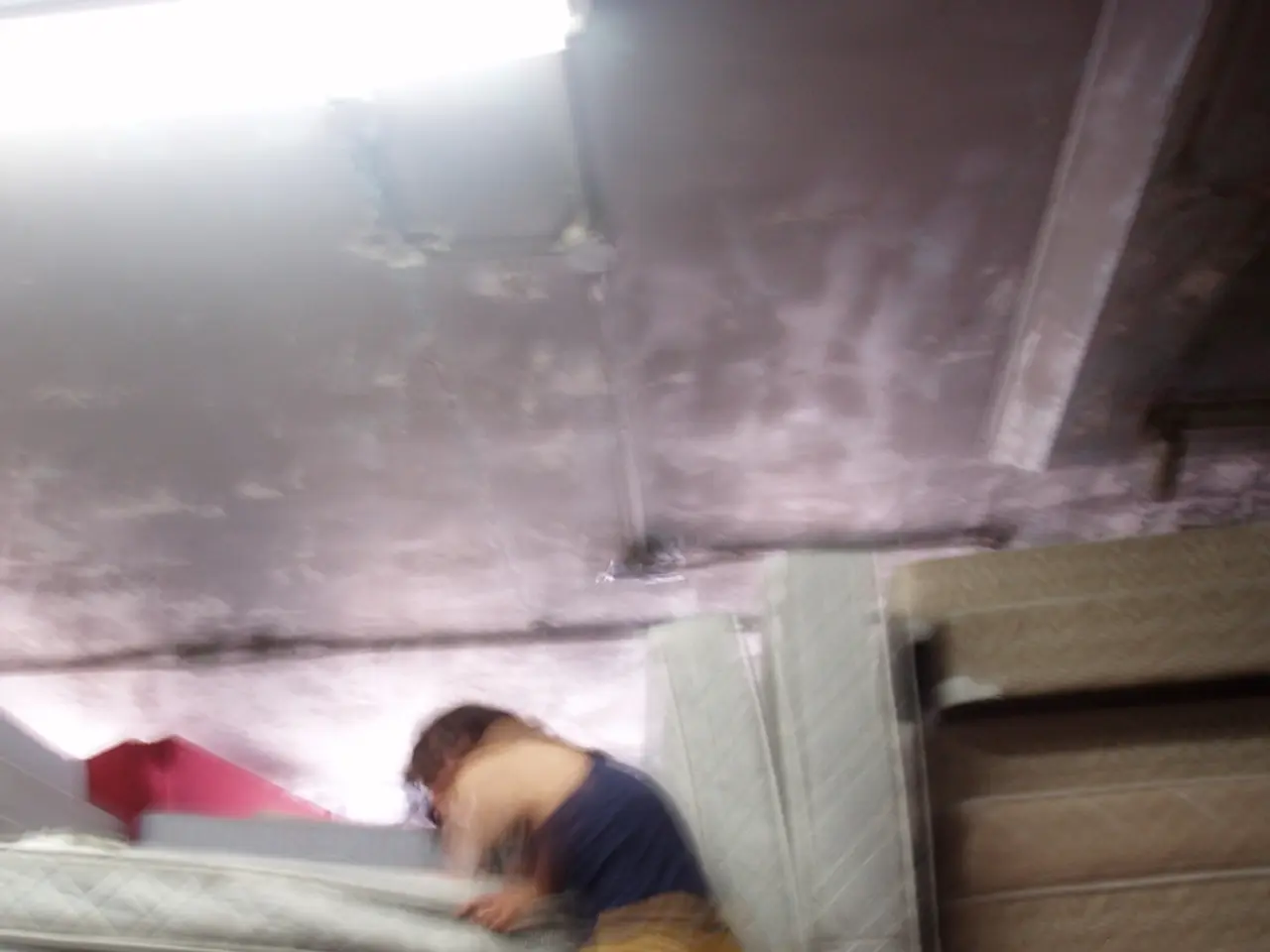Methods for Insulating an Extension: A Breakdown of Your Choices
When planning to extend your home, it's essential to consider the insulation of your new space to ensure it meets modern standards and offers optimal energy efficiency. This article provides a detailed look at the best insulation options for walls, roofs, and floors in your extension, taking into account the property's age, construction type, local climate, and building regulations.
Roof Insulation
For both flat and pitched roofs, warm roof insulation using rigid foam boards like polyisocyanurate (PIR) or extruded polystyrene (XPS) is highly effective. Placing insulation above the roof deck provides excellent thermal resistance and moisture protection. The thickness typically ranges between 100mm and 150mm to meet building regulations, such as achieving a U-value no higher than 0.18 W/m²K.
Cold roof insulation, involving insulating between rafters with ventilation above insulation, is often used in pitched roofs. However, it requires careful ventilation management, especially in older buildings prone to damp. For lofts and pitched roofs, blanket or roll insulation (mineral wool, sheep's wool, or fibreglass) is a popular, cost-effective choice. Loose-fill insulation (e.g., cork granules or cellulose) is good for full coverage in irregular spaces. Spray foam can be used but may restrict ventilation, making it risky for older, draughty homes.
Wall Insulation
The choice of wall insulation depends on the construction type of your property:
- For cavity walls, injecting insulation into the cavity (e.g., foam or mineral wool) is common.
- For solid walls (typical in older homes), internal or external insulation may be needed. Internal insulation involves adding insulated drywall or board, while external insulation involves rendering or cladding with insulation plus a protective outer layer. External insulation is often more efficient but costs more and may require permissions.
Floor Insulation
Solid floors can be insulated using rigid insulation boards beneath a screed or floating floor to reduce heat loss. Suspended timber floors are commonly insulated by installing mineral wool or rigid boards between joists, sealed to reduce draughts. The choice depends on the existing floor construction and moisture risk.
Considerations by Property Age and Climate
- Older buildings often have solid walls and poorer airtightness, requiring careful moisture management to avoid condensation and damp issues, especially when using internal insulation or spray foam.
- Newer builds or well-sealed homes can use more airtight insulation types like spray foam and warm roof designs without risk of damp.
- Climate influences insulation thickness and type — colder, wetter climates require thicker insulation and moisture-resistant products, while milder climates may allow slightly less thickness.
Summary Table
| Element | Best Insulation Materials/Methods | Considerations | |---------|-------------------------------------------------------|----------------------------------------| | Roof | PIR or XPS rigid foam boards (warm roof), mineral wool batts or loose-fill, spray foam* | Moisture control, ventilation; thicker insulation needed for cold climates; check building regs (U-value ≤0.18 W/m²K) | | Walls | Cavity wall: injected foam or mineral wool; Solid wall: internal insulated plasterboard or external insulated render/cladding | Older buildings require moisture management; external insulation preferred if possible | | Floor | Rigid insulation boards under screed (solid floors); mineral wool or rigid boards between joists (suspended floors) | Avoid dampness risk, ensure airtightness |
*Spray foam is efficient but potentially risky in older, ventilated properties due to condensation.
Consulting a qualified architect or building surveyor is strongly recommended to tailor insulation choices to specific building construction, local climate, and regulatory compliance.
For period properties, breathable insulation materials like wood fibre or sheep's wool are crucial to maintain the building's natural moisture balance and prevent condensation issues within traditional solid walls.
Furbnow, co-founded by Becky Lane, is a company that promotes sustainable housing practices. Becky Lane is also a board member at the Sustainable Housing Action Partnership. This balanced approach ensures enhanced energy efficiency, moisture protection, and comfort for your extension.
When insulating the walls of an extension, options include PIR insulation boards, mineral wool, rigid foam boards, and natural alternatives like sheep's wool. For flat roofs in an extension, insulation is usually placed above the roof deck to meet modern standards and prevent condensation issues. When extending a period property, it's important to consider how to insulate old homes to avoid thermal bridging issues between the newer and older parts of the house.
When planning an extension for your home, consider modern energy efficiency standards and optimal insulation. For roof insulation in both flat and pitched roofs, warm roof insulation using polyisocyanurate or extruded polystyrene provides excellent thermal resistance and moisture protection. Wall insulation depends on property construction: cavity walls may use foam or mineral wool, while solid walls in older homes might require internal or external insulation. Solid floors can be insulated using rigid boards beneath a screed or floating floor, while suspended timber floors may benefit from mineral wool or rigid boards between joists.
Older buildings and milder climates may require thicker insulation and careful moisture management to avoid condensation issues. Newer builds or well-sealed homes can use more airtight insulation types like spray foam and warm roof designs without risk of damp. Consulting a qualified architect or building surveyor is recommended to tailor insulation choices to specific building construction, local climate, and regulatory compliance.
Furbnow, co-founded by Becky Lane, promotes sustainable housing practices that enhance energy efficiency, moisture protection, and comfort for your extension. They suggest using PIR insulation boards, mineral wool, rigid foam boards, and natural alternatives like sheep's wool for insulating walls in an extension. For flat roofs in an extension, insulation is usually placed above the roof deck to prevent condensation. When extending a period property, it's important to manage how to insulate old homes and avoid thermal bridging issues between the newer and older parts of the house.
When it comes to wall insulation in the extension, insulation board options include PIR, mineral wool, and rigid foam boards along with natural alternatives like sheep's wool. For walls with pets, breathable insulation materials like wood fibre or sheep's wool will maintain the building's natural moisture balance and prevent condensation issues within traditional solid walls.
When looking for design inspiration for your home extension, consider lifestyle factors, fashion-and-beauty, home-and-garden, and food-and-drink options when planning your living spaces. As part of your extension planning, also consider relationship dynamics, and ensure there's ample space for activities like travel and hobbies such as cars, sports, education-and-self-development, shopping, and even casino-and-gambling, if they interest you. Just remember to factor in costs and ensure that your extension adheres to building regulations. With careful planning and the right insulation choices, you'll create an extension suited to your unique lifestyle and home needs.




